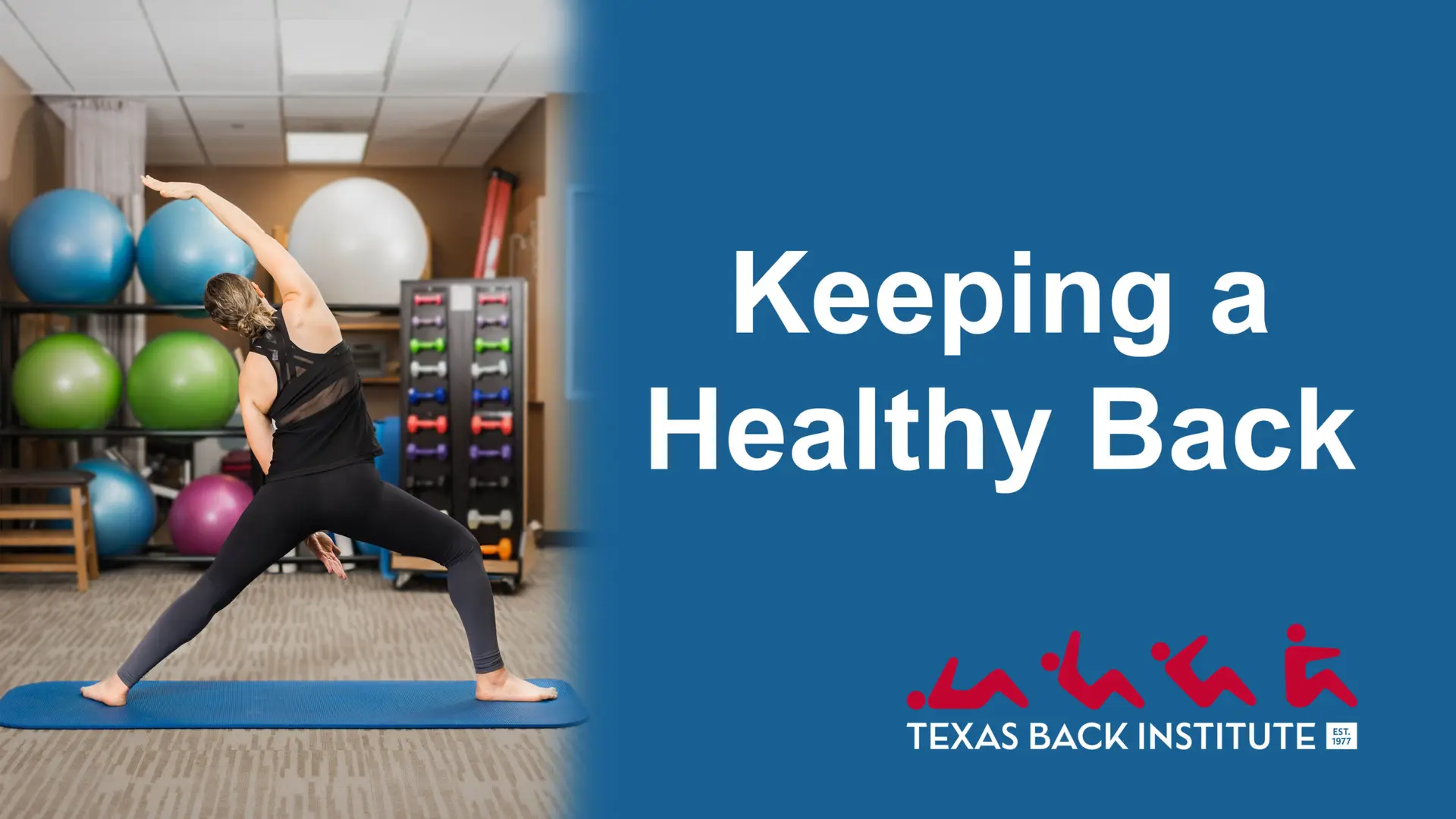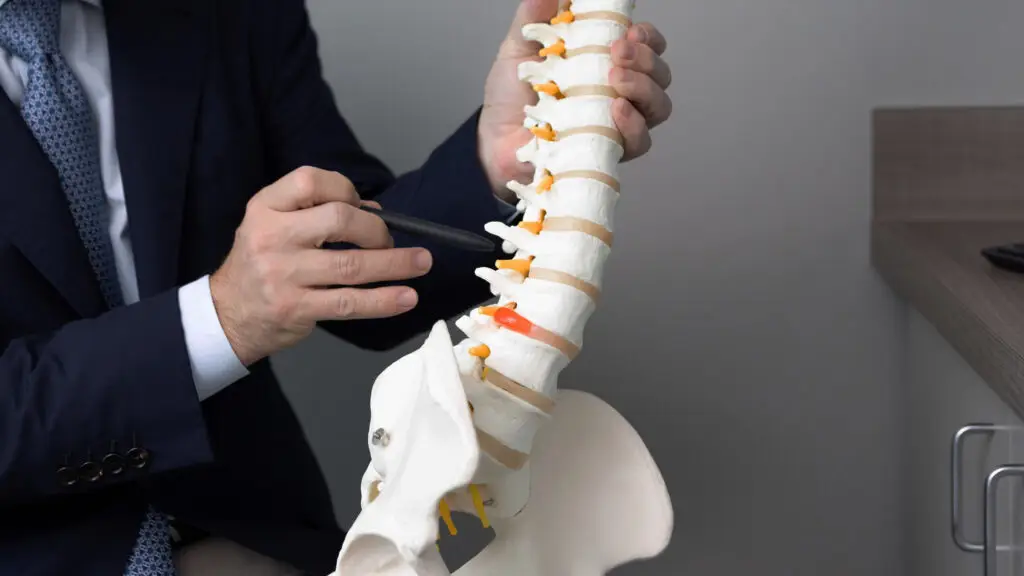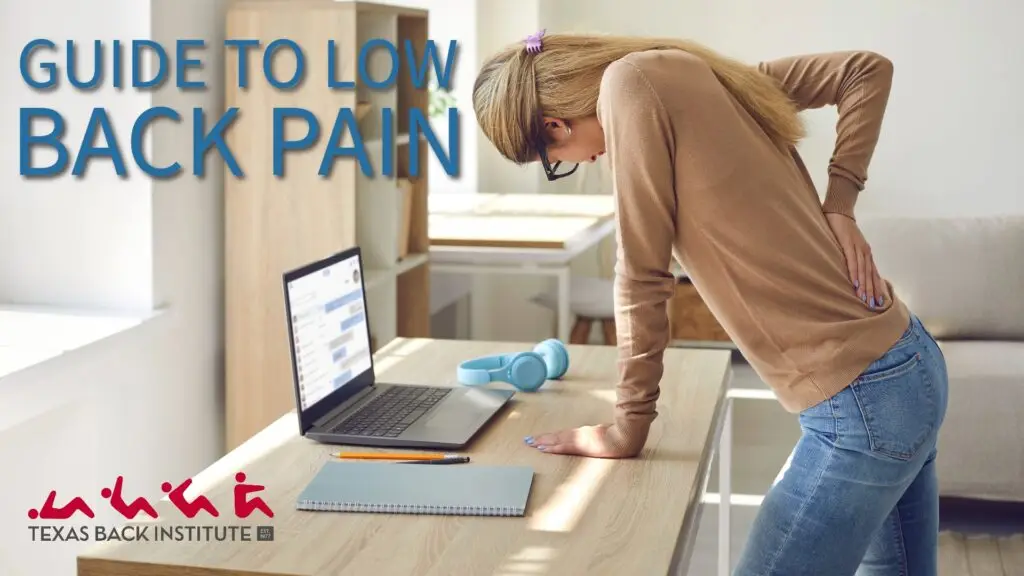Every day, millions of people struggle with lower back pain, and since October is Spine Health Awareness Month, the spine specialists at Texas Back Institute want to remind you of some key points to remember when suffering from neck or back pain. According to the National Spine Health Foundation, immobility and a lack of physical activity are the primary contributors linked to spinal pain and disability.
The numbers paint a painful picture. Back pain and disability are more frequent than cancer, stroke, heart disease, diabetes, and Alzheimer’s disease combined. Many spine conditions can be treated with medication, physical therapy, or other outpatient procedures, while others may require surgery to alleviate pain. The experts at Texas Back note that back pain symptoms can vary depending on the location of the pain and the type of injury; however, many back injuries share similar symptoms, including:
- Constant aching or stiffness along the spine, radiating down anywhere from the base of the neck to the tail bone.
- Localized pain in the injured area, typically from lifting heavy objects or bending over.
- Sharp pain in the middle or lower back that is caused by sitting or standing for prolonged periods.
- Pain radiating from the lower back area to the buttock, down the thigh, and into the leg.
- Pain radiating down the arms or into the hands.
- Numbness or tingling in the arms or legs.
- Inability to stand straight without experiencing muscle spasms.
- Limited neck or back mobility, ranging from mild to severe.
The Most Common Causes of Lower Back Pain
The American Association of Neuromuscular & Electrodiagnostic Medicine estimates that 4 out of 5 adults experience lower back pain at some point in their lives. Some of the most common causes of back pain include:
Muscle or ligament strain
Repeated heavy lifting or a sudden awkward movement can strain back muscles and spinal ligaments. For those who are in poor physical condition, constant strain on the back can cause painful muscle spasms. Muscle strains and spasms are common injuries and can range from small twinges to debilitating pain. Home treatments like ice and heat can help. Muscle relaxants, massage, stretching, and consistent exercise are also recommended treatments. Of course, the optimal approach to finding a successful treatment starts with a consultation with a spine specialist, such as those at Texas Back.
Bulging or ruptured discs
Discs act as cushions between the bones in the spine. The soft material inside a disc can bulge or rupture. Bulging or ruptured discs typically cause pain when they are pressing on a nerve. Disc disease is often diagnosed with spine X-rays, CT scans, or MRIs done for another reason. The cause of a ruptured disc is sometimes sudden trauma. Other factors might include age, sedentary lifestyle, poor posture, and weight. When treating severe disc injuries, patients may require steroid injections or minimally invasive surgery to help alleviate symptoms.
Osteoarthritis
In some cases, arthritis in the spine can lead to a narrowing of the space around the spinal nerves, a condition called spinal stenosis. Symptoms related to spinal stenosis include low back pain and weakness, which can result in difficulty walking even for short distances. Treatment options include medication, epidural injections, and physical therapy. If non-surgical options are unsuccessful, spinal decompression surgery to relieve pressure on the spinal cord and nerve roots may become necessary and has a high success rate.
Osteoporosis
Osteoporosis causes the spinal vertebrae to become porous and fragile, which increases the risk they can break (fracture). Compression fractures in osteoporotic vertebrae can be very painful. A doctor will evaluate a patient’s bone density to determine the risk of fracture and confirm the diagnosis. Osteoporosis treatment typically consists of medication along with lifestyle changes. The most widely prescribed osteoporosis medications are bisphosphonates. Minimally invasive surgery for compression fractures is sometimes performed and can substantially reduce pain.
Ankylosing spondylitis
This inflammatory disease can cause some of the bones in the spine to fuse or grow together. This makes the spine less flexible and can lead to spinal deformity. Treatment options are determined by the severity of the pain. Patients typically begin treatment with physical therapy and anti-inflammatory drugs. In severe cases, significant spinal deformity may occur, in which case surgery is indicated.
Do you have a question for the spine experts at Texas Back?
Email us at info@texasback.com or click here.
Recurring back pain can be a sign of a serious disorder. At Texas Back we help patients understand treatment options after a thorough physical exam to evaluate their potential sources of pain. Many times, patients experience significant improvement in their condition without surgery with conservative treatments like medication, physical therapy, or injections. As a last resort, if surgery is indicated, advances in minimally invasive lumbar and cervical spine surgery have greatly reduced the effect of surgery on the body, providing patients with faster recovery times and successful treatment outcomes.
For more information on treatment for these conditions, just click here.
Move Your Spine
The “Move Your Spine” campaign is designed to educate the public about spine wellness and maintaining a healthy back through regular exercise and core stabilization. One of the best ways to prevent back pain is to be proactive. Here are some recommendations from the American Academy of Family Physicians for protecting your back and preventing back pain.
- Do muscle stretching and back strengthening exercises at least twice a week.
- Be mindful of your posture. Stand and sit up straight.
- Avoid heavy lifting. If you do lift something heavy, bend at your knees and keep your back straight. This way, your leg muscles will do most of the work.
- Get physically active and eat a healthy diet. Being overweight puts a strain on your back.

Spine Health Awareness Month is a great reminder to take care of your spine. If back pain is affecting your life, it doesn’t have to. Click here to schedule an appointment with the specialists at Texas Back Institute.



